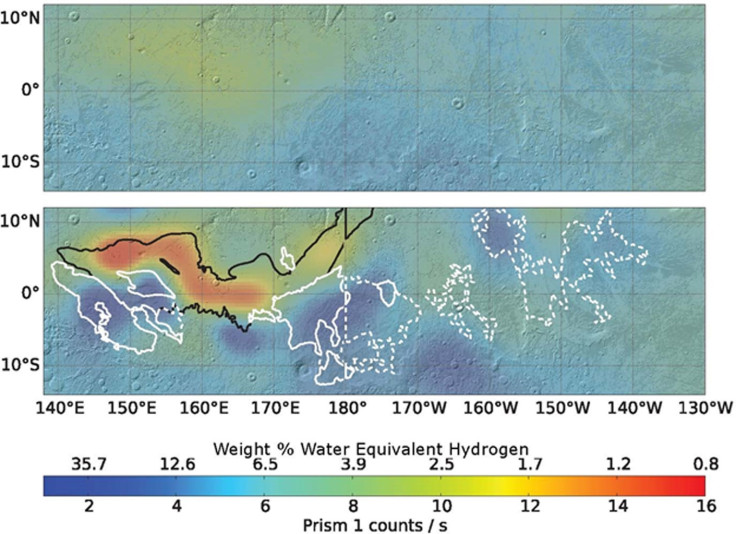Odyssey data analysis suggests there could be water ice at Martian equator
It was previously thought that ice and water could not exist around Mars' equatorial region.

Scientists' analysis of old data from the Mars Odyssey spacecraft missions suggests that there might be water, or water ice in the equatorial regions of the Red Planet.
It was previously thought that water or ice cannot exist in the region because of thermodynamic instability there, but scientists have uncovered vast quantities of hydrogen indicating buried water, which is the case at higher latitudes. This was never believed to be possible at the equator.
Nasa scientists have inferred this using old data that was recorded between 2002 and 2009. If this is the case, reports, space.com, humans might not need to carry water with them when they travel to Mars. Manned colonisation missions have been envisioned as early as 2024 and an entire roadmap is ready. The need for avoiding carrying water could prove to be highly beneficial cutting costs significantly.
Martian settlers could essentially live off the land to a certain extent, says the report. Activities like growing plants, cooling equipment, and drinking can be done by making use of water on the Red Planet instead of recycling water that is carried there.
Odyssey's first major discovery was buried hydrogen at high latitudes in 2002. The 2008 Phoenix lander also confirmed this. At lower latitudes - around the equator - measurements of hydrogen were explained as hydrated minerals and not as the presence of water-ice.
Data from Odyssey's neutron spectrometer was used to make the discovery. While the spectrometer is not designed to directly look for water, the report points out that it can detect and measure neutrons. By finding hydrogen, the presence of water or other hydrogen-bearing substances can be inferred.
Using image reconstruction techniques, scientists reduced the blur or the noise in the data, improving spatial resolution to 290 km, which is twice the previous resolution of 520km. "It was as if we'd cut the spacecraft's orbital altitude in half, and it gave us a much better view of what's happening on the surface," said Jack Wilson, the study's principal investigator and a postdoctoral researcher at the Johns Hopkins University Applied Physics Laboratory in Maryland.

At this level of close-up, researchers were able to see better levels of detail and noticed a higher concentration of hydrogen. While there have been suggestions by the European Space Agency's Mars Express Orbiter and Nasa's own Mars Reconnaissance Orbiter that there might be water just below the equator where volcanic deposits have been found, this was met with scepticism, says the report.
That is because, "if the detected hydrogen were buried ice within the top meter [3.3 feet] of the surface, there would be more than would fit into pore space in soil", Wilson said.
Even with this data, it is not absolutely certain that there is water at the Martian equator, says the report. "So, for now, the signature remains a mystery worthy of further study, and Mars continues to surprise us," said Wilson.
© Copyright IBTimes 2024. All rights reserved.





